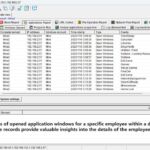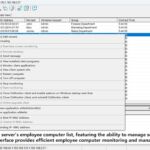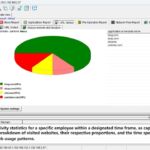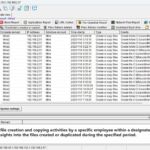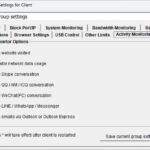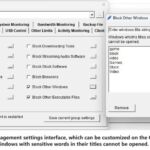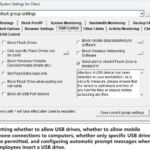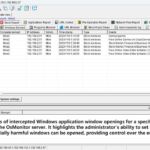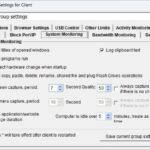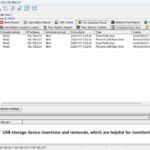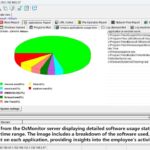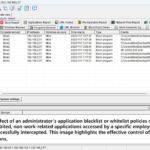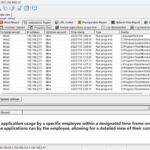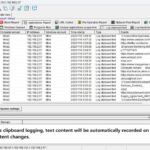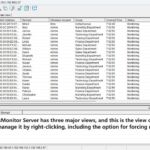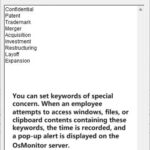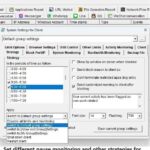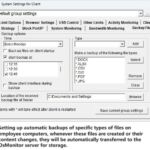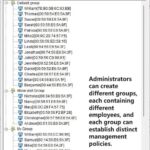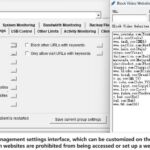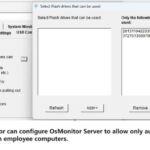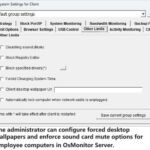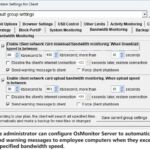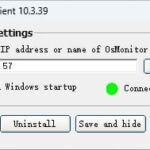The basic idea of a greedy algorithm is to make the optimal choice at each step based on the current state, with the expectation of achieving a global optimal solution.
Greedy algorithms have the following advantages in monitoring software:
- Simplicity and efficiency: Greedy algorithms usually have simple and straightforward strategies that are easy to implement and understand. This enables quick decision-making in monitoring software, adapting to high-speed data streams and real-time requirements. Monitoring software needs to process monitoring data instantly and make corresponding decisions, and greedy algorithms are well-suited for this requirement. By choosing the current optimal strategy at each step, they can quickly process and decide on monitoring data.
- Real-time decision-making: Monitoring software requires timely response and processing of monitoring data. Greedy algorithms can make decisions quickly within a short period, adapting to the needs of real-time monitoring. Greedy algorithms choose the optimal solution at the current state without requiring global information. Therefore, they can respond and process monitoring data rapidly to meet the real-time requirements of monitoring software.
- Approximate optimal solutions: Although greedy algorithms do not guarantee obtaining the global optimal solution, they can achieve results that are close to the optimal solution in certain monitoring scenarios. Greedy algorithms optimize the solution by choosing the current optimal strategy at each step. While this may not be the global optimal solution, in practical applications, results that are close to the optimal solution are often sufficient to meet monitoring requirements. Greedy algorithms can quickly find a feasible solution within a limited time, making them widely applicable in practice.
- Resource-constrained problems: In monitoring software, resource constraints are often present, such as limited bandwidth and storage space. Greedy algorithms can choose the most advantageous way to utilize resources based on the current situation, maximizing the effectiveness of monitoring. For example, in resource allocation problems, greedy algorithms can select the current optimal resource allocation scheme based on resource characteristics and constraints, such as choosing the best layout for monitoring points or allocating appropriate bandwidth. By allocating and utilizing limited resources effectively, greedy algorithms can optimize the overall performance of the monitoring system.
In monitoring software, greedy algorithms can be applied in various scenarios, including but not limited to the following cases:
- Resource allocation problems: Resource allocation is one of the important issues in monitoring software. Greedy algorithms can select the current optimal resource allocation scheme based on resource characteristics and constraints, such as choosing the best layout for monitoring points or allocating appropriate bandwidth. By allocating resources properly, greedy algorithms can optimize the overall performance of the monitoring system.
- Path selection problems: In monitoring software, selecting the best path is necessary for transmitting monitoring data. Greedy algorithms can choose the optimal path at each step based on the current network condition and path characteristics, improving transmission efficiency and reducing latency. By selecting the current optimal path, greedy algorithms can optimize the quality and efficiency of data transmission.
- Event triggering and response: Monitoring software needs to respond promptly to abnormal events such as faults or attacks. Greedy algorithms can select the optimal response strategy based on the current event's importance and scope of impact, allowing for quick and effective event handling. By choosing the current optimal response strategy, greedy algorithms can enhance the monitoring system's detection and response capabilities for exceptional events.
It is important to note that greedy algorithms have the advantages of simplicity and efficiency, real-time decision-making, approximate optimal solutions, and applicability to resource-constrained problems in monitoring software. They find extensive application in scenarios such as resource allocation, path selection, and event response. However, the suitability of greedy algorithms should be evaluated based on the specific problem's characteristics and constraints.
About OsMonitor:
The mission of OsMonitor is to create a Windows computer system tailored for work purposes, effectively regulating employee computer behavior. It enables employers to understand what employees are doing each day, monitoring every action, including screen activity and internet usage. Additionally, it restricts employees from engaging in specific activities such as online shopping, gaming, and the use of USB drives.
OsMonitor, designed purely as software, is remarkably user-friendly and requires no additional hardware modifications. A single management machine can oversee all employee computers. As a leading brand in employee computer monitoring software with over a decade of successful operation, OsMonitor has rapidly captured the global market with its minimal file size and excellent cost-effectiveness compared to similar software. At this moment, thousands of business computers worldwide are running OsMonitor daily.




